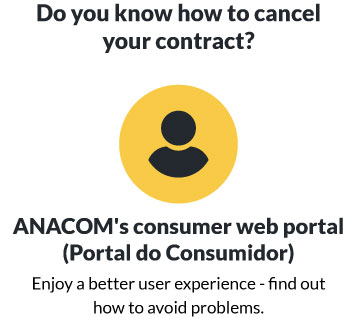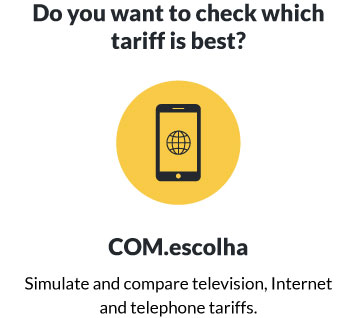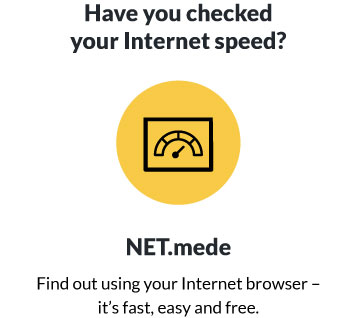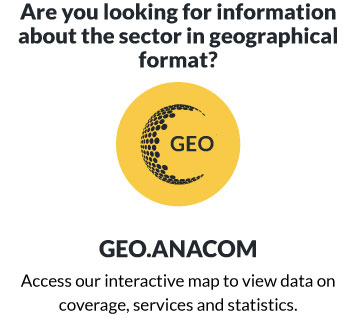ANACOM hosted its 9th International Conference on the theme "New regulation for a Gigabit Society". The conference took place in Lisbon on 2 November 2016 at 2:00 p.m., at Fundação Calouste Gulbenkian (Calouste Gulbenkian Foundation). The aim of the conference was to promote debate on the proposed review of the electronic communications regulator framework, made public by the European Commission on 14 September 2016. This framework will govern regulation of the sector from 2020.
The keynote speaker, presenting the European Commission's proposal to the Conference, was Roberto Viola, Director General of the Directorate General for Communications Networks, Content and Technology (DG CONNECT).
Consult:
Commission proposes new European Electronic Communications Codehttps://www.anacom.pt/render.jsp?contentId=1395186
Event location
Registrations
Registrations are closed.Contacts
Av. José Malhoa, 12
1099 - 017 Lisboa
Portugal
Fax: +351 217 211 001
Call free: +351 800 206 665
13:30 REGISTRATION
14:00 OPENING SESSION
- Fátima Barroshttps://www.anacom.pt/render.jsp?contentId=1128480
Chair of ANACOM's Board of DirectorsPresentation1
- Pedro Marqueshttps://www.anacom.pt/render.jsp?contentId=1397611
Portuguese Minister of Planning and Infrastructure
Keynote speaker | The Connectivity package: modernising the telecoms framework
- Roberto Violahttps://www.anacom.pt/render.jsp?contentId=1395209
Director General, DG CONNECT, European Commission
Topic:
- Presentation of the European Commission’s proposal for a review of the regulatory framework
15:15 THE REGULATORY PERSPECTIVE
Chair: Magnus Franklinhttps://www.anacom.pt/render.jsp?contentId=1396337, Chief Correspondent, Telecoms, MLex
Speakers:
- Sébastien Sorianohttps://www.anacom.pt/render.jsp?contentId=1395411
Chairman, Autorité de Régulation des Communications Electroniques et des Postes (ARCEP) and Chair of BEREC in 2017 - Alexandre de Streelhttps://www.anacom.pt/render.jsp?contentId=1395419
Joint Academic Director at the Centre on Regulation in Europe (CERRE) and Professor at the Universities of Namur and Louvain - Pilar del Castillo Verahttps://www.anacom.pt/render.jsp?contentId=1395899
Member of the European Parliament's Committee on Industry, Research and Energy - Tony Shortallhttps://www.anacom.pt/render.jsp?contentId=1397568
Director, Telage
Topic:
- Main points and implications of the new regulatory framework
16:15 COFFEE-BREAK
16:45 THE MARKET PERSPECTIVE
Chair: Pedro Nortonhttps://www.anacom.pt/render.jsp?contentId=1397645, Manager
Speakers:
- Miguel Almeidahttps://www.anacom.pt/render.jsp?contentId=1396486, CEO, NOS
- Paulo Neveshttps://www.anacom.pt/render.jsp?contentId=1395443 , CEO, MEO
- Mário Vazhttps://www.anacom.pt/render.jsp?contentId=1395208, CEO, Vodafone Portugal
- Miguel Veiga Martinshttps://www.anacom.pt/render.jsp?contentId=1398121, CEO, NOWO&ONI
Topic:
- Major market players discuss European Commission's proposal to review the regulatory framework
17:45 CLOSING REMARKS
Languages:
Portuguese and English.
Interpreting service available.
Venue:
Fundação Calouste Gulbenkian
Avenida de Berna, 45 A
1067-001 Lisboa
Portugal
Tel.: (+351)217823000
email: info@gulbenkian.ptmailto:info@gulbenkian.pt
URL: Fundação Calouste Gulbenkianhttp://www.gulbenkian.pt/Institucional/pt/Homepage
Parking:
Parque Berna (underground car park)
Praça de Espanha (next to the Gôndola restaurant)
Exclusive disabled parking is available.
Public Transport:
Metro (Underground) | S. Sebastião (Blue and Red line)
Bus | 716, 718, 726, 742, 746, 756
www.carris.pthttp://www.carris.pt/
www.metrolisboa.pthttp://www.metrolisboa.pt/
Coordinates:
38.737541
-9.154649
Places to eat:
Cafes at the Gulbenkian Museum/Founder's Collection, Gulbenkian Museum/Modern Collection and at Interpretive Center Gonçalo Ribeiro Telles (Garden).
Museum cafes open Wednesday-Monday, 10:00 a.m. – 6:00 p.m.
The Garden cafe is open every day from 10:00 a.m. – 7:00 p.m.
All cafes have ramp or elevator access.
Information for people with mobility difficulties:
All areas of the Foundation, including the Garden, have access for people with reduced mobility, with ramps and, in certain areas, tactile floors.
Exclusive disabled parking is available.
Accommodation:
For further information on accommodation in Lisbon, please see the website Booking.com https://www.booking.com/searchresults.en-gb.html?aid=397615;label=gog235jc-index-pt-XX-XX-unspec-pt-com-L%3Apt-O%3AwindowsS7-B%3Afirefox-N%3AXX-S%3Abo-U%3Ac;sid=de85007449ab35f23bbcdde5511bbde5;class_interval=1&dest_id=-2167973&dest_type=city&group_adults=2&group_children=0&hlrd=0&index_postcard=0&label_click=undef&no_rooms=1&offset=0&raw_dest_type=city&room1=A%2CA&sb_price_type=total&shw_aparth=1&slp_r_match=0&src=index&ss=lisboa&ss_raw=lisb&ssb=empty and Maisturismo
https://maisturismo.org/Category/alojamento/.
Further information:
- Lisboa-live
http://www.lisboa-live.com/lisbon/index.html
- GUIADACIDADE
http://www.getportugal.com/pt/distrito-lisboa-11
- Câmara Municipal de Lisboa
http://www.cm-lisboa.pt/
- Turismo de Portugal
http://www.visitlisboa.com/Lisbon.aspx
Conclusions
A summary of some of the main ideas presented at the 9th ANACOM Conference, “New regulation for a Gigabit Society”, held on 2 November 2016, at the Calouste Gulbenkian Foundation in Lisbon.
Opening session
Fátima Barros, Chair of the Board of Directors, ANACOM
- Connectivity is one of the central elements of the European Commission's strategy for the Digital Single Market (DSM). The Commission estimates that 500 billion euros of investment will be needed to achieve connectivity targets across Europe.
- The new European Electronic Communications Code, presented by the European Commission in September 2016 will provide a framework for sector regulation from 2019 onwards.
- The Code includes connectivity as an objective of national regulators (NRA), alongside the promotion of competition, consumer protection and development of the single market, avoiding prioritisation.
- The Code brings an innovative approach to regulation, recognising that traditional regulatory instruments are insufficient and by providing regulators with a tool box containing a range of regulatory tools, allowing flexibility in their use depending on the specific conditions of national markets.
- In the regulation of access, the Code sets out that regulators should take circumstances such as existing commercial access agreements and symmetrical regulatory obligations into account. Measures are also being introduced to facilitate co-investment agreements in new infrastructure.
- The Commission recognises the importance of regulating access to ducts and posts held by operators with significant market power, an area where ANACOM has led with innovation, regulating access to the incumbent operator's ducts and posts from 2006, creating an environment conducive to the development of competition based on network infrastructure.
- There are concerns about the areas which the new code designates as Digital Exclusion Areas - predominantly rural areas with low population density, where private investment is unlikely. The new Code allows that these areas may be subject to state aid, and, for Portugal, the challenge will be to find a way to finance that investment from public funds.
- The most controversial proposals of the new Code are linked to the transformation of the Body of European Regulators for Electronic Communications (BEREC) into a true European agency and the possibility of the Commission having a veto over remedies (in situations where BEREC concurs); this will reduce NRA flexibility.
- Equipping NRAs with the financial and human resources they need to accomplish their mission is one of the Commission's major concerns, widely shared among all NRAs in Member States.
Pedro Marques, Minister of Planning and Infrastructure
- The constant evolution of technology makes it difficult to anticipate future challenges and opportunities. We need to confirm trends and identify needs.
- Public policy and regulation will define Europe's capacity to be an early adopter, a leading global player in the digital transformation of the economy, as opposed to a mere follower. The issue here is a debate about the real capacity for accomplishment of the so-called digital union.
- To achieve the goal of 100 Mb in rural areas entails significant investment which the Government considers a priority and which will also increase levels of social cohesion.
- Another central element in the digitalisation of the economy are digital skills; in this context, it is worth noting the "competências digitais" (e-skills) initiative, which, by 2020, will train an additional 20 thousand people in information and communication technologies, addressing the shortage of specialists in this area.
- The digitalisation of public services is another priority, aiming to create a simpler and more efficient state administration, closer to citizens and businesses.
- Investment in digital skills and, more generally, the digitalisation of the economy is crucial to building a more competitive country, with the creation of skilled jobs and achievement of sustainable growth.
Roberto Viola, Director General, DG CONNECT, European Commission
- Why is it important to discuss the “Gigabit Society”? Modern society does not function without digital connectivity. Europe's competitiveness as a continent, must be connected to the high-speed network.
- We are witnessing a 2nd industrial revolution, the digital revolution; this makes the “Gigabit Society” a political priority for everyone in Europe.
- The most important message of the EC package of proposals is that, by 2025, all citizens should have access to connections of 100 Mb and, at the same time, have a "gigabit opportunity" in fixed and mobile connections. For this, Europe needs an investment of 500 billion euros.
- Although it wants to attract investors, Europe cannot forget its basic principles, which is why the Code includes the premise that all citizens have the right to broadband access, as is the case with water or electricity. Furthermore, the Code allows regulators to intervene on access pricing for the most disadvantaged sections of the population.
- With no one-size-fits-all in Europe, the regulatory tools must also be flexible. The diversity of approaches naturally requires greater European coordination, and, as such, it has been proposed to strengthen coordination of regulators - BEREC.
- Feedback on the Commission’s proposals, received from the telecommunications community, the financial community and other stakeholders, has been relatively positive. We now need rapid adoption of the Code by the European Parliament and by the Council.
The regulatory perspective
From left to right: Magnus Franklin (MLEx), Tony Shortall (Telage), Sébastien Soriano (ARCEP), Pilar del Castillo Vera (European Parliament), Alexandre de Streel (CERRE).
Sébastien Soriano, Chairman, Autorité de Régulation des Communications Electroniques et des Postes (ARCEP) and Chair of BEREC in 2017
- BEREC is still examining the European Commission’s proposal and is due to give an opinion on some of its topics by the end of the year.
- It is very positive that the Commission has extended connectivity goals to mobile. This is what people need.
- It is important for regulators that they can use new regulatory tools. In France, an approach of information/data-based regulation is being tested - unbundling of data.
Alexandre de Streel, Joint Academic Director at the Centre on Regulation in Europe (CERRE) and Professor at the Universities of Namur and Louvain
- The incentive to regulate well is as important or more important than the incentive to invest. With greater flexibility in legislation, it is vital to have good national regulators.
- With the law being more flexible, more mechanisms are required to provide coordination, and BEREC is the best place for regulators to share experiences and select the best solutions. Strengthening BEREC, as proposed by the European Commission, is therefore a good measure.
- It is important to distinguish Internet access services, which need to be well regulated in view of their importance to society and the economy, and other digital communication services, i.e. those who do not need specific consumer protection measures as proposed in the Code.
- We need to incorporate technological solutions into consumer protection measures.
Pilar del Castillo Vera, Member of the European Parliament's Committee on Industry, Research and Energy
- Connectivity is the factor that has driven humanity from one state to another. In any sector, connectivity is crucial in the production, distribution and consumption of goods and services.
- What does this new Code bring? It is more proportionate, more flexible and provides greater legal certainty. It also instils the principle of investment, when previously the only principles considered were competition and consumer welfare.
- Better coordination in management of the spectrum is one of the main achievements of the new Code. Coordination will not bring loss of sovereignty to individual countries, but rather greater certainty and more security for investments.
- BEREC is a success story. Adjustments may be needed, but BEREC has gained legitimacy and has helped in important situations, such as on the network neutrality guidelines.
- Parliament has taken on an attitude of urgency towards a decision on this package of measures, the Gigabit Society will not wait!
Tony Shortall, Director, Telage
- Harmonisation in Europe is important, but we should not overlook the specific circumstances of each country.
- With respect to fixed access, the Commission proposal marks a change in current policy. It begins with geographical separation, following the identification of urban areas, where competition based on infrastructure is possible and where passive remedies are used, and low-density/rural areas, where other models are used, such as co-investment.
- There is concern about possible situations in which remedies intended for urban areas (passive access) are implemented in rural areas, where we will not have competitive implementation.
- Investors need clarity and certainty. The flexibility of the Code may create uncertainty, unless it is applied consistently. There must be consistency between policy and implementation to give certainty to investors.
The market perspective
From left to right: Pedro Norton (Gestor), Paulo Neves (MEO), Miguel Almeida (NOS), Mário Vaz (Vodafone), Miguel Veiga Martins (NOWO&ONI).
Paulo Neves , CEO, MEO
- Positive points: 1) provides an investment guarantee based on regulation at the level of civilian infrastructure, i.e. regulation in terms of ducts and posts; 2) Geographical segmentation in order to better intervene.
- Points of concern: 1) The potential role of the European regulator, particularly because "one size does not fit all"; The possibility of a veto over the national regulator is a cause for concern because it may be an obstacle to implementation in line with the country's specific circumstances; 2) Operators will have to report on their intended mapping for next generation networks; 3) The question of how to regulate cross-border services - agreeing with the principle, it will depend on how it is implemented; this issue also raises the "problem" of the spectrum and how it should be harmonised at a European level.
- There is willingness to make the investment sought under the Code, provided that there is a return on investment, i.e., regulatory and market conditions must give guarantees. It should be remembered that the 4G network is not yet in full use.
Miguel Almeida, CEO, NOS
- Agreement with the principles of the European Commission's proposals to ensure that Europe enters the digital economy with competitive advantages over the rest of the world.
- The goal of 5G in 2020 is inappropriate and premature given the current state of technology and the real needs of the market, and given that a large quantity of 4G spectrum remains available for use.
- European policy is often contradictory. Europe seems to want to force operators to make investments on behalf of society and the digital economy, but then be subject to data protection rules which prevent European companies from being competitive in the digital economy and the information economy globally.
- Broadband goals (100Mb and 1Gb) in 2025 seem totally achievable in Portugal, if operators are allowed to continue their investment. The only unrealistic goal is the implementation of 5G, because it is still poorly defined, there is no standard, no technology, no equipment, no spectrum…
Mário Vaz, CEO, Vodafone Portugal
- Vodafone concurs with the European Commission’s proposals in principle, especially the harmonisation of regulatory rules which hold operators as European partners for the competitiveness of the European economy.
- Access and co-investment will lead to an acceleration in the installation of high-speed networks, ensuring that there are no areas in Europe left unserved.
- On the issue of OTT services, it is a positive move to put those who make use of numbering into the same spectrum of obligations as apply to telecom operators, but more is needed, because OTT companies use other ways to carry out communications, without using numbering resources.
- The Code will emphasise an integrated view of spectrum costs and investment costs, which also opens the door to a reduction in current spectrum fees to ensure availability for investment.
- From now on, regulator and government decisions should reflect the European principles and objectives that we want to accomplish in the future.
Miguel Veiga Martins, CEO, NOWO&ONI
- A somewhat ambitious Code whose aim is to connect all of Europe to the Internet. If we want to have everyone connected to 100Mb, we must look at access as a basic service.
- Portugal has already lost two opportunities to invest in infrastructure, not just in the more disadvantaged areas but also in new technologies and innovation: in 2G, 3G and 4G and now in fibre networks, where almost nothing has been done in terms of infrastructure sharing.
- Rationality in investment is essential. Infrastructure costs cannot remain at their current level, it is necessary to rationalise investment in a coordinated manner at operator level, nationally and at a European level.
- Videos of ANACOM Conference 2016: New regulation for a Gigabit Society https://www.anacom.pt/render.jsp?contentId=1400814&backContentId=1395183





